Call to Action—Urban Agriculture Survey for Purdue University PhD Project
Are you 18 years or older with an involved interest in the field of agriculture, particularly indoor ag? Well, we need you! The Purdue University Agricultural and Biological Engineering Department is conducting a survey on stakeholder experience in urban agriculture, specifically with CEA and vertical farming, as part of a PhD research project. The project consists of two surveys to be completed, and all responses will be anonymous. If you have a moment to offer your insight and help a graduate student in the process, click the link to get started!
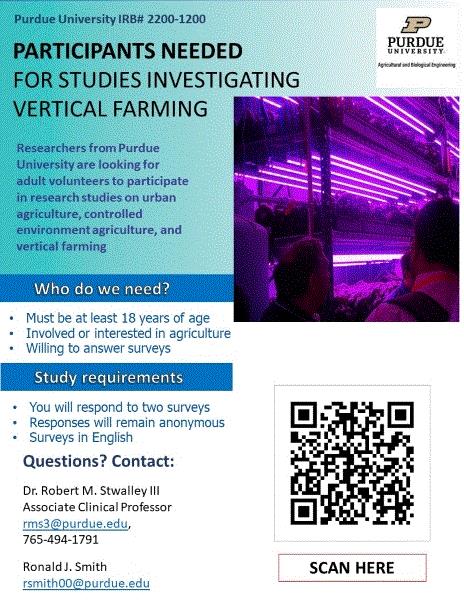
NCERA-101 Honored with NCRA Multistate Research Award
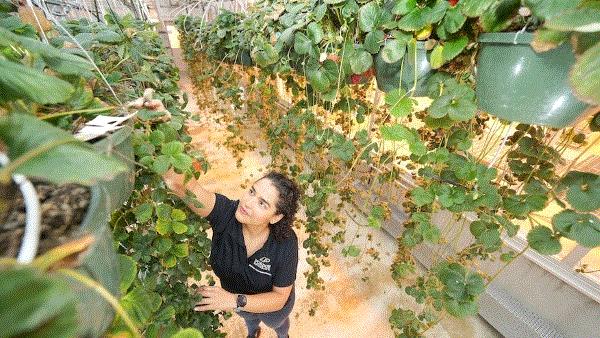
It was recently announced that the Committee on Controlled Environment Technology and Use within the North Central Extension & Research Activity-101, more commonly known as NCERA-101, has been honored with the 2024 Excellence in Multistate Research Award by the North Central Regional Association (NCRA) of State Agricultural Experiment Station Directors.
Presented annually, this award highlights outstanding research efforts that “enhance the visibility of multistate programs.” The first time NCERA-101 has received the award, Celina Gómez, Purdue associate professor of CEA and representative for NCERA-101, was highlighted for her instrumental role in constructing the award nomination packed. The NCERA-101 program now contains 176 members representing 142 institutions within 35 states, and I highly recommend anyone interested to investigate getting involved with this incredible initiative.
Plenty Opens Doors at Richmond, VA Berry Farm
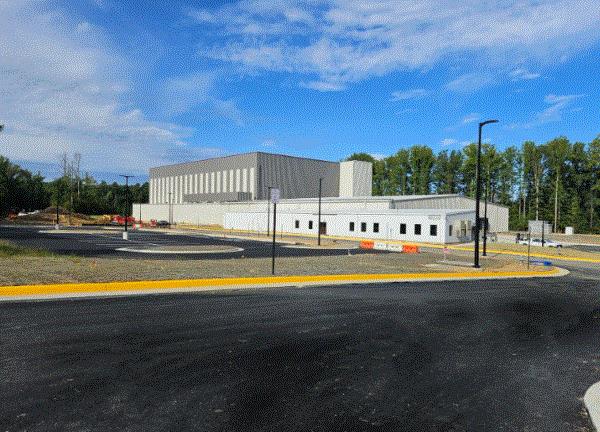
Plenty Unlimited, Inc. announced recently that they will be opening the doors on their Richmond, Virginia, facility, marking the opening of the “world’s first farm to grow indoor, vertically farmed berries at scale.”
The farm is designed to produce an excess of 4 million pounds of strawberries for Driscoll’s annually as they use less than 40,000 sq. ft. This is accomplished by growing vertically on 30 ft. tall towers hung from the ceiling, as opposed to the stacked, horizontal bed system favored by other companies.
Touting the farm’s use of novel technologies from AI-controlled grow rooms to patent-pending pollination methods for “more efficient and effective pollination than using bees,” I’m excited to see what’s to come as the company promises the first berries will be available in early 2025.
For more on the facility, the full press release is available here.
Resource Innovation Institute (RII) Releases Working Group Topics for CEA Accelerator
The
Resource Innovation Institute (RII), a not-for-profit often featured in
Inside Grower for their educational courses, recently announced the working group topics for its
CEA Accelerator Project. Hosted in partnership with the Lawrence Berkeley National Laboratory (Berkeley Lab), the working groups are tasked with bringing together “members from the public sector, academia, private sector and growers to examine critical issues relevant to the ongoing advancement of Controlled Environment Agriculture (CEA).” The three working groups include:
-
Energy Management Working Group: addressing challenges and opportunities related to energy management in CEA, including strategic energy management, demand response and distributed generation.
-
Artificial Intelligence (AI) and Advanced Robotics Working Group: will collaboratively formulate industry best practices for the effective adoption of these technologies in CEA.
-
Industry Working Group on High-Tech Greenhouse Knowledge Transfer: dedicated to facilitating the exchange of expertise, best practices and innovative strategies between the United States and established markets in the Netherlands and Canada.
Groups initiated work in May with the responsibility of producing a Best Practices Guide to act as a resource for CEA producers to implement and manage in their own operations. The goal is for completion in early 2025, and I personally look forward to seeing what they come up with!

Ohio State AgTech Innovation Hub Announces Four New Projects
The College of Food, Agricultural, and Environmental Sciences (CFAES) at The Ohio State University recently announced four new research projects that will be funded as part of their AgTech Innovation Hub, a collaboration between CFAES, Nationwide and the Ohio Farm Bureau.
Tasked with generating solutions to the evolving challenges facing agriculture and climate risk management, one project in particular will be examining the use of drones as an early detection method of possible issues in CEA operations before catastrophic losses to property or worker safety occur. More information about the AgTech Innovation Hub and the projects being funded can be found in the OSU press release.
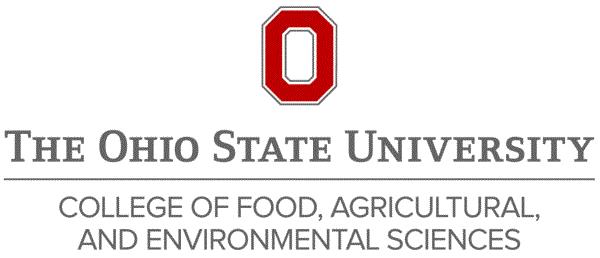
MSU Professor Guo-Qing Song Receives ASHS Honor
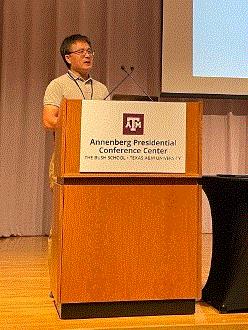
The American Society for Horticultural Science (ASHS) recently announced the recipient of their Outstanding International Horticulturist Award as Guo-Qing Song, Professor and Associate Director of Michigan State University’s Plant Biotechnology Resource and Outreach Center.
Over the course of his career, Dr. Song has had multiple noteworthy achievements to the field of horticulture through his expertise in multiple areas of plant genetics and propagation, including having trained 180 international horticulturalists from 30 global institutions over the past 15 years. He also served extensively through professional societies, working groups and conferences as he organized workshops and served on the editorial boards of three journals.
More information about Dr. Song and his incredible contributions can be found in the MSU press release.
Lessons Learned at CEA Summit East
It’s been a busy couple of weeks as I traveled first to Dallas two weeks ago and then Danville, Virginia, last week, for work trips. In Dallas I had the pleasure of touring Eden Green Technology in Cleburne, Texas, a unique hybrid vertical farm and greenhouse. You’ll be able to read about that visit in an upcoming Inside Grower magazine.
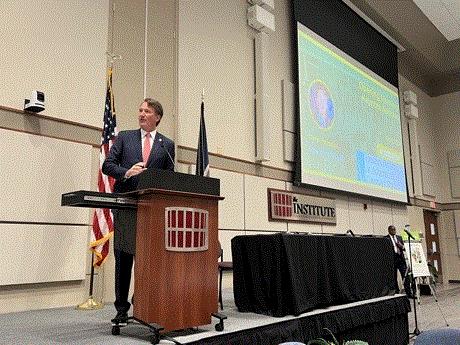
The trip to Danville, Virginia, of course, was to attend the third annual CEA Summit East, a conference put on thanks to a partnership between Indoor Ag-Con, the Controlled Environment Agriculture Innovation Center, Virginia Tech and the Institute for Advanced Learning and Research.
It was a dynamic event, starting with the keynote from Virginia Governor Glenn Youngkin. It was touch and go on whether or not he’d be able to make it due to the emergency situations resulting from Hurricane Helene, but it’s clear CEA is a topic he cares about and he was able to deliver the keynote before turning his attention back to the recovery efforts.
During his keynote he hit the high points of the three-pronged approach the Commonwealth of Virginia is taking to address the needs of indoor agriculture’s future, including workforce, research and policy. I wrote about that approach in last year’s cover story on Virginia
HERE.
Other high-level notes from the panel sessions and presentations included a continued focus on achieving better unit economics to better compete with field-grown produce, as well as to focus on opportunities for partnership (public and private) and explore key areas that help reduce energy costs and input expenses. Other key components were consistency and surety of supply, too, so retailers can have a high level of confidence that the grower can provide product reliably throughout the year. As growers improve their reliability, they can increase their shelf space with more products.

A More Granular Level
Aside from the 30,000 feet overview, there were several presentations that got in the dirt, pun intended, on granular topics within indoor production. One of those was an interesting talk from the folks at Pure Future on the research conducted on their proprietary blend of algae as a biostimulant called Wicked Green. That research found applications of small amount of the product not only increase average fresh weight for leafy greens production but also improve the health of the plant and in tomatoes increase shelf life from 14 days to 59 (yes, 59 days) with no gamma irradiation. In fact, the product increased shelf life for leafy greens, herbs, lettuce and strawberries, too.
It's been researched by multiple public and private partners, and a short list includes University of Arizona, Arizona State University, Cal Poly, Cornell University and Miami University, among others.
And you may have the same reaction I did initially, which is why put algae in a hydroponic system? But the people at Pure Future say not only do they not see additional algae growth (since it’s a different type of algae) but they see a reduction in the ones that cause biofilm and harbor bad bacteria.
Speaking of forms of algae that clog the system (in very simple terms), another presentation from Dr. Michael Evans at Virginia Tech and Dr. Peter Konjoian, a researcher from Massachusetts, highlighted the challenges and benefits of using a Quaternary Ammonium Compound (commonly called quats) in hydroponic systems.
They conducted experiments with continuous injection and pulse injections of quats at various doses to see how it would impact leafy greens as well as control pathogens, biofilms and algae. They found for cleaning a system in between crops a single treatment at as low as 2 ppm for one hour resulted in no longer being able to identify Phytophthora nicotianae. While the plants were in the system, a pulsed injection resulted in little to no phytotoxicity at 2 ppm for five minutes and kept the system clear for two weeks.
That’s the basics on this research, but if you’d like to learn more, please contact
Dr. Evans.
One final note, there’s some very interesting research coming out of Virginia Tech on evaluating micro-tomato cultivars for use in a greenhouse NFT system. You’ll see more on this research in a future issue of Inside Grower, but PhD student Brandan Shur presented at the event on the tomatoes that had potential for offering a suitable yield, which would allow leafy greens growers to diversify into cherry tomatoes with the same infrastructure. We’ll keep you updated on Brandan’s progress!

Stay curious, ask questions and let me know how it goes at scampbell@ballpublishing.com.

Dr. Sean Campbell
Editor-at-Large
Inside Grower
This email received by 32,953 loyal readers!
Interested in advertising in Inside Grower? Contact Paul Black or Kim Brown and they'll show you how easy, effective and affordable it is.